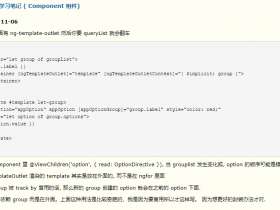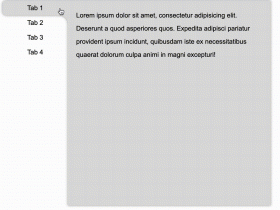- A+
Bearer token是一种常见的身份验证机制,通常用于Web API和其他Web服务。在前端中,Bearer token通常是通过HTTP头(HTTP header)发送的,具体来说是通过"Authorization"头。
在使用Bearer token进行身份验证时,需要将token包含在HTTP请求头的"Authorization"字段中。例如,如果使用JavaScript发送HTTP请求,可以通过设置XMLHttpRequest对象的"setRequestHeader()"方法来添加Authorization头。
以下是一个示例:
var xhr = new XMLHttpRequest(); var url = "https://example.com/api/data"; xhr.open("GET", url, true); xhr.setRequestHeader("Authorization", "Bearer your_token_here"); xhr.onreadystatechange = function () { if (xhr.readyState === 4 && xhr.status === 200) { var response = xhr.responseText; console.log(response); } }; xhr.send();
在上面的代码中,我们在HTTP请求头中添加了Authorization头,并将Bearer token值设置为"your_token_here"。请注意,这里的token值应该是从服务器端获得的有效的Bearer token值。
这样,当你的请求到达服务器端时,服务器端将能够检查Authorization头中的Bearer token,并使用该token来验证身份。
vue给bearer token传值
在Vue中,你可以使用axios库来发送HTTP请求并将Bearer token传递到请求头中。Axios是一个流行的第三方库,可以方便地发送HTTP请求。
以下是使用Axios在Vue中发送带有Bearer token的HTTP请求的示例代码:
import axios from 'axios'; const instance = axios.create({ baseURL: 'https://example.com/api', timeout: 5000, headers: { 'Content-Type': 'application/json' } }); // 在请求头中设置Bearer token const token = 'your_token_here'; if (token) { instance.defaults.headers.common['Authorization'] = `Bearer ${token}`; } // 发送GET请求 instance.get('/data') .then(response => { console.log(response); }) .catch(error => { console.log(error); });
在上面的代码中,我们创建了一个名为"instance"的Axios实例,并设置了基本的URL和请求超时时间。我们还在请求头中设置了Content-Type头,它指示服务器请求的内容类型为JSON格式。接下来,我们将Bearer token设置为默认请求头的Authorization属性,并将其设置为Axios实例的全局默认值。
最后,我们使用Axios实例的get()方法发送GET请求,并在.then()块中处理响应数据。如果请求失败,我们在.catch()块中处理错误信息。
请注意,在实际的开发中,你需要替换示例代码中的URL和token值。此外,你可以根据你的需求自定义Axios实例的配置。
fetch给bearer token传值
使用Fetch API在发送HTTP请求时,可以通过设置HTTP头(HTTP header)的方式将Bearer token传递给服务器。在使用Fetch API时,可以使用Headers对象来设置HTTP头。以下是使用Fetch API发送HTTP请求并在HTTP头中设置Bearer token的示例代码:
const url = 'https://example.com/api/data'; const token = 'your_token_here'; fetch(url, { method: 'GET', headers: new Headers({ 'Content-Type': 'application/json', 'Authorization': `Bearer ${token}` }) }) .then(response => response.json()) .then(data => console.log(data)) .catch(error => console.error(error));
在上面的代码中,我们首先定义了要请求的URL和Bearer token。然后,我们使用fetch()方法发送GET请求,并在请求配置对象中设置请求方法和请求头。我们使用Headers对象来设置请求头,包括Content-Type和Authorization头,其中Authorization头包含了Bearer token。
最后,我们在响应中解析JSON数据,并使用.then()和.catch()方法分别处理成功和失败情况。
请注意,在实际的开发中,你需要替换示例代码中的URL和token值。此外,你可以根据你的需求自定义请求配置对象。




